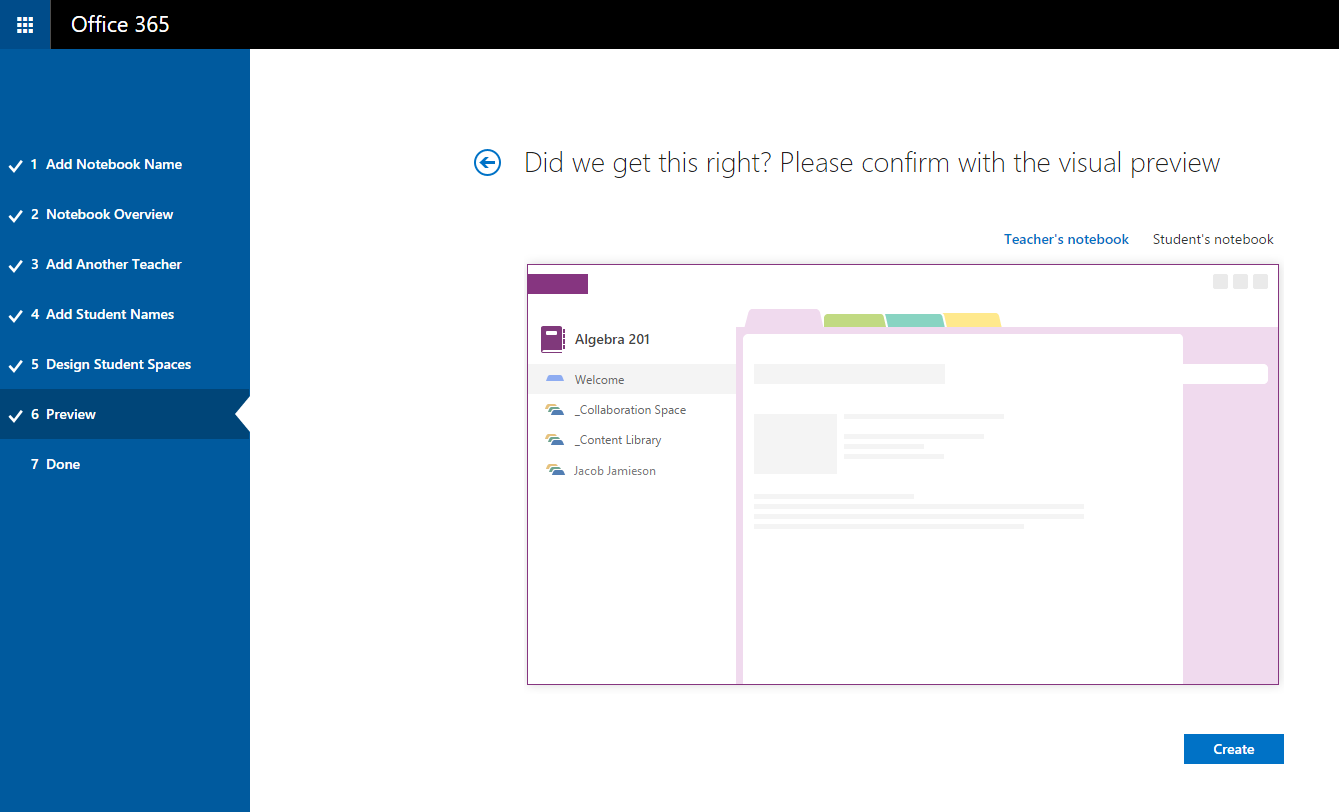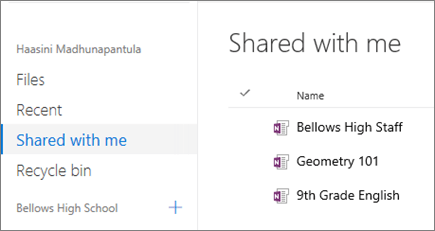- Microsoft Staff Notebook
- Staff Notebook In Microsoft Teams Faq
- Microsoft Teams Staff Notebook
- Microsoft 365 Staff Notebook
Types of Teams are determined by the purpose of the Team. I have taught Teams and I’ve created a course on Teams but I’ve never done much with Microsoft Teams, the hero of remote learning, remote teaching and remote work, here on this site. I’m currently working on a project in Teams outside of the world of education, so I am aware there are some differences between the business and education editions of Teams. However, this site is dedicated to educational technology, so on this long-delayed Day 112 of 365 Ideas for Microsoft 365, we will look at the four types of Teams available in education tenants.
- Schools, colleges, and universities worldwide use staff notebooks to help promote productivity, engagement, and collaboration. You can use the staffNotebooks endpoint to perform common tasks for staff notebooks, such as creating staff notebooks and adding or removing leaders or members.
- OneNote Class and Staff Notebook app—now available via Office 365 in 90 new countries and regions. In early August, we enabled OneNote Class and Staff Notebooks for 90 new countries around the world—bringing the grand total to 151 countries where Office 365 Education customers can use the OneNote Class or Staff Notebook app.
Creating a New Team
A step-by-step tutorial on how to use a OneNote Staff Notebook in Microsoft Teams. This is built-in to the Staff Team, and combines OneNote with Microsoft Te.
When you open Teams, if you open anywhere else, you’ll want to click on the Teams icon on the far-left column, which we call the “me space”, as opposed to the “we space” that takes up most of the screen in Teams. The me space is where you find your Teams, your assignments, your files, and so on.
When you click on the Teams icon you will see all of the Teams you are either the owner or a member of. In the top right corner of the screen you will see the “Join or create team” button. Click it.
You will now see the “Create a team” box, the “Join a team with a code” box, and possibly some other teams that you can request to join. We are of course going to click on “Create a team”.
We have finally reached the actual topic of this article- the four types of educational Teams- Class, PLC, Staff and Other.
There is of course a brief description under each to help you decide which is right for your current project. One of the differences between types of teams is the OneNote notebook that comes with each team.
Other Team Types
Let’s start generic. The “Other” team type gives you a General channel which comes with Posts and Files tabs, and no built-in OneNote notebook.
You can add a OneNote notebook as a tab. If you do, you can choose to add an existing notebook or create a new one for the Team.
You can add channels, including private channels, add tabs, host live meetings, use all the advanced chat features, share and collaborate on files.
PLC Teams
The PLC Team type has all that, plus it automatically creates a PLC Notebook and places it on a tab for easy access.
This is a regular OneNote Notebook, but set up for use in a PLC. Everything is customizable, of course, but it is set up with sections and directions for you and your peers based on common PLC use cases.
Both the “Other” team and the “PLC” teams have the same settings options for managing the Team.

Really, the biggest difference is the OneNote addition.
Staff Teams
The staff team is where things start to get interesting, but again, it’s a OneNote difference.
The staff team gets a staff Notebook, which is in many respects similar to a OneNote Class Notebook. Reeves paint brushes.
Like a class notebook, when you click to open it you have to set it up first. Apple mac update. You can start from scratch or using an existing notebook as a template.
This honestly is exactly like a class notebook with the names changed.
It is essentially 4 notebooks in one. You’ll get a collaboration space that everyone has read/edit rights in. You’ll get a Content Library that is read-only for members, and only the “leader” can edit. There is also a “leaser-Only” section that members can’t even see. This is a staging area for the leader to organize content ahead of time that they can share out piece by piece when it is appropriate. They will be able to send pages or sections into the content library, the collaboration space, or distribute a copy to each member’s private notebook. The private notebook is the fourth section. Each member of the staff team gets a private notebook that only they and the leader can see or edit. The team leader sees everyone’s private notebooks, but other members can’t. When you set up the Class Notebook you decide what sections are in everyone’s private notebook.
Class Teams
The Class team has the most unique features. It has a OneNote Class Notebook. It feels weird to compare the Class Notebook to the Staff Notebook, because normally I do it the other way around, since Class Notebook existed first, even before Teams existed. Whereas the staff notebook, if used inside a school, would have the Principal and possibly other administrators as the “Leader(s)”, and teachers and staff as the members, the Class Notebook of course has the teacher(s) as the leaders and the students as the members. The teacher (and possibly co-teachers)
Can use the teacher-only section to organize the entire curriculum to distribute content, warm-ups, classwork, exit tickets, formative assessments and homework as needed. They can use the Content Library for read only documents like the syllabus, announcements, directions and lab safety protocols. The class can collaborate in the Collaboration Space. Each student has their private Student Notebook that only they and the teacher can see and edit. Once again, the teacher sets up the sections for the notebook.

But there are other differences with a Class team beyond the OneNote notebook. Notice there are additional tabs not seen in the other Team types. Not only are they automatically added in a Class Team, they aren’t even available in the other Team types. Only a Class Team has Assignments. As a result, only a Class Team will have Grades. Once you have some grades added, you can also add the Insights tab, which, as the name indicates, provides insights into the class’, and individuals’ work habits.

Class Teams can sync with many students data systems, so it may be possible to auto-create Teams from the class rosters in your SIS. That data flow works both directions as well, so when you grade in Teams, those grades can sync to many gradebook programs as well.
I will delve more into details of assignments and other features in upcoming articles.
Microsoft Staff Notebook
Looking for more? How about the
Remote Learning with Microsoft Teams Course
Sign up to learn how to go from a complete novice in Teams to using Teams for your complete solution for remote learning.
If you like this style of directions and screenshots, walking you through ideas for using Microsoft tools in your classroom, check out my book,
All the Microsoft Tools You Need to Transform Your Classroom: 50 Ideas for using Microsoft Office 365 for Education available on amazon in both Kindle and paperback.
With EDU Notebooks in Microsoft OneNote, you can save a copy of your notebook to OneDrive to keep a backup or share it with others.
Save to a Microsoft Account

Navigate to OneNote.com and enter valid credentials for sign in.
Click on the EDU Notebooks tab you want.
Navigate to the notebook you want to save, right click on it, and click the Save a copy option.
Note: If a dialogue box appears asking for you to allow OneNote to access your info, click Yes to continue.
The Save a copy dialogue box will open. Select Save to a Microsoft Account.
A Microsoft sign in screen will appear. Login with a Microsoft/Outlook account.
After a successful login, you will be asked to confirm that you want to proceed. Click on Copy notebook.
After confirming you will see the following message.
To check that the notebook was copied to your account correctly, navigate to OneDrive and sign in with the account you just saved the EDU Notebook to.
Open the Notebooks folder to verify the EDU Notebook is there.
Staff Notebook In Microsoft Teams Faq
Save to a work or education account
Navigate to OneNote.com and enter valid credentials for sign in.
Click on the EDU Notebooks tab you want.
Navigate to the notebook you want to save, right click on it, and click the Save a copy option.
Note: If a dialogue box appears asking for you to allow OneNote to access your info, click Yes to continue.
The Save a copy dialogue box will open. Select Save to your work or education account.
You'll see the following success message.
Navigate to OneDrive and sign in with the account you just saved the EDU Notebook to.
Open the Notebooks folder to verify the EDU Notebook is there.

Microsoft Teams Staff Notebook
IMPORTANT
Microsoft 365 Staff Notebook
Save a Copy works only if section size is less than 250 MB.
Save a Copy to a 'work/school account' only works for file sizes less than 2 GB.
